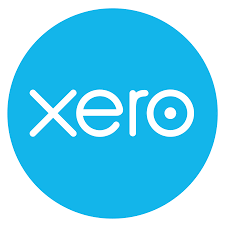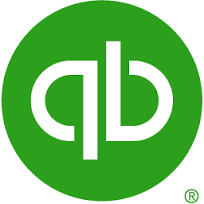The A to Z of Commonly Used Accounting and Bookkeeping Terms and Definitions
We have devoted an entire page to defining commonly used accounting and bookkeeping terms. The usefulness of definitions shouldn’t be underestimated. Having clearly defined terms ensures that everyone is on the same page when you discuss or read about these issues.
Please feel free to provide your clients with these definitions so you share a common understanding of key accounting and bookkeeping-related issues.
Commonly Used Accounting and Bookkeeping Terms
Accrual accounting: A system of accounting that records transactions when they happen regardless of when they are paid. For example, a sale made on December 31 but paid on February 2 will be recorded in the accounts as happening on December 31.
Accounts receivable: Customers who owe money to a business for goods or services purchased on credit. This is a current asset on the company’s balance sheet. Accounts receivable are also known as ‘debtors’.
Accounts payable: The money a business owes to its suppliers for goods or services purchased on credit. It’s shown as a liability on the company’s balance sheet. Also known as ‘creditors’.
Assets: All the items a company owns in order to carry out its business, such as cash, buildings, land, tools, equipment, vehicles and furniture.
Audit: A check performed by an auditor or tax official on the financial records of a business to make sure everything has been accounted for correctly.
Balance day adjustments: Adjustments that are made on accounts at the end of the accounting period or financial year so the company’s accounts reflect the accurate financial position of the business.
Balance sheet: A financial statement providing a snapshot of the company’s financial position at a particular date in time. It’s called a balance sheet because the money owed by the company (assets) must equal claims against those assets (liabilities and equity).
Bookkeeping: The recording of a business’s financial transactions, and a part of the accounting process. Double entry bookkeeping is the method most commonly used.
Bookkeeping cycle: The process of recording and processing the accounting events of a company. The bookkeeping cycle begins when a transaction occurs and finishes with its inclusion in the financial statements.
Capital: The business’s wealth in the form of cash or assets it owns.
Capital cost: A fixed, one-off substantial purchase of physical items such as plant, equipment, building, or land.
Carriage inwards: The costs incurred by a business transporting goods, usually inventory. Carriage inwards costs are added to the cost of the inventory held by the business. Also known as ‘freight in’.
Carriage outwards: The costs incurred when the business sells a product to a customer that incurs delivery charges. Carriage outwards is the cost of selling included as part of the operating expenses of a business, and therefore does not affect the gross profit of the business. Also known as ‘freight out’.
Cash accounting: A system of accounting that records transactions when the cash is received for them, rather than at the time they happen. For example, a sale made on December 31 and paid by the customer on February 2 is recorded as happening on February 2.
Cash book: A financial journal that contains all cash receipts and payments, including bank deposits and withdrawals. Entries in the cash book as posted into the general ledger. In modern accounting, the cash book is computerised.
Cash flow: The measure of actual cash flowing in and out of a business. A business’s cash flow over a period can also be viewed on its cash flow statement.
Chart of accounts: The listing of all the accounts that a company has. There are five categories that make up the chart of accounts — asset, liability, equity, revenue, expenses.
Coding: A term used to describe allocation of a transaction amount to an account in the chart of accounts.
Cost of goods sold (COGS): The cost to the business of any parts, materials or stock that are sold to customers. This can also include the manufacturing costs of such items. Also known as ‘cost of sales’.
Cost of sales: The cost to the business of any parts, materials or stock that are sold to customers. This can also include the manufacturing costs of such items. Also known as ‘cost of goods sold’.
Credit: A term used when a customer purchases goods or services with an agreement to pay at a later date – for instance, an account with a supplier, a credit card, or a loan.
Credit is also a term used in double entry bookkeeping to record one side of a transaction in the accounts (debit is the other side – hence ‘double entry’).
Creditors: The money a business owes to its suppliers for goods or services purchased on credit. It’s shown as a liability on the company’s balance sheet. Also known as ‘accounts payable’.
Debt: An amount owed by a person or business – for example, unpaid bills and loan repayments. Bad debt is money owed to a business that is unlikely to be paid in the foreseeable future.
Debtors: Customers who owe money to a business for goods or services purchased on credit. This is recorded as a current asset on the company’s balance sheet. Debtors are also known as ‘accounts receivable’.
Depreciation: An accounting method used to track the ageing and use of assets.
Depreciating assets: A depreciating asset is one with a limited effective life that can be reasonably expected to decline in value over the time its use, such as vehicles, technology and computer equipment, machinery and plant equipment, furniture, buildings, carpets, and so on. Land, trading stock and some intangible assets are not depreciating assets.
Double-entry: A method of bookkeeping in which all the transactions are entered twice — once as a debit and once as a credit. All the debits need to equal the same as the credits.
Drawings: The funds withdrawn from a business by the business owner for his own personal use.
End-of-month: The end of a bookkeeping cycle, in which the bookkeeper needs to take various steps to finalise and close off the accounts. Depending on the size of the business, this could take several weeks.
Estimate: The written cost to provide goods or services to a business or customer. Also known as a ‘quote’.
Equity: The money invested in the company by its owners, calculated by deducting liabilities from assets. Equity is also known as ‘net assets’, ‘net worth’, ‘owner’s equity’ or ‘shareholder’s equity’.
Expenses: All the money spent to operate the business that is not directly related to the sale of individual goods or services.
Financial year: The 12-month period over which a business operates. In Australia, the financial year runs July 1 through June 30.
Freight in: The costs incurred by a business transporting goods, usually inventory. Carriage inwards costs are added to the cost of the inventory held by the business. Also known as ‘carriage inwards’.
Freight out: The costs incurred when the business sells a product to a customer that incurs delivery charges. Carriage outwards is the cost of selling included as part of the operating expenses of a business, and therefore does not affect the gross profit of the business. Also known as ‘carriage outwards’.
Fringe Benefits Tax (FBT): A tax on the benefits employees receive as a result of their employment. This also included benefits provided by someone other than an employer.
General ledger: The primary accounting record of a company that uses double-entry bookkeeping. It divides the company’s accounts into three account types: assets, liabilities and equity accounts. In modern accounting, general ledgers are computerised.
Goods and Services Tax (GST): A consumption tax levied on most goods and services sold domestically. GST is paid by consumers, but held by businesses and remitted to the government.
Gross income: The money a business earns from sales before expenses, tax and other deductions are taken out. Also called ‘revenue’ or ‘turnover’.
Income statement: A financial statement listing sales and expenses that is used to show the profit and performance of a business over a given period. Also known as a ‘profit and loss statement’.
Invoice: A written document that details the sale of goods or services to a business or customer. It will include the date, invoice number, quantity, description, total, payment terms, the company’s ABN or ACN, and details any taxes included in the price.
Input: A term used for entering data into bookkeeping software.
Interim reports: Reports that are produced about a company during the financial year. They’re known as ‘interim reports’ because the financial year hasn’t ended and are based on a shorter period. They’re usually required by banks before a loan is approved.
Intangible assets: Assets that have no physical form but are of value to the business and will provide future economic benefit, such as goodwill, patents and most intellectual property.
Interest: The money a company will pay if it borrows money from a bank or other company.
Inventory: The actual goods, products or materials a business currently has on hand, either for selling or producing goods for sale. Also known as ‘stock’.
Journals: Where bookkeepers keep records in chronological order of daily company transactions. Each of the most active accounts — cash, accounts payable and accounts receivable — has its own journal.
Liabilities: The financial obligations (such as loan) or amounts owed (such as an unpaid bill or credit from a supplier).
Loss: When a company fails to generate enough revenue to cover all expenses associated with the operation of the business.
Markup: The different between the sale price of stock and the price the business paid for it. Markups are calculated as a percentage of the price it cost to buy the item or set as a fixed calculation, such as doubling the cost price.
Margin: The difference between the selling price of goods or services and the profit. The margin is usually worked out as a percentage showing the proportion of profit for each sales dollar.
PAYG (Pay As You Go): A withholding tax that requires employers to pay incremental amounts of income tax on their employees’ behalf, which accumulate towards their expected end-of-year income tax liability.
Payroll: The total amount of wages paid to employees by a company, including bonuses, superannuation and withheld taxes.
Petty cash: Money kept on a business’s premises for the purpose of small, miscellaneous purchases, such as office supplies.
Profit: The revenue a business earns, minus the costs and expenses of running the business. If the figure is negative, it’s called a loss.
Profit and loss statement: A financial statement listings sales and expenses that is used to show the profit and performance of a business over a given period. Also known as an ‘income statement’.
Quote: The written cost to provide goods or services to a business or customer. Also known as an ‘estimate’.
Reconcile: The process of matching one set of figures with another set of figures. For example, matching the cash book with the bank account and investigating or fixing any differences.
Revenue: The money a business earns from sales before expenses, tax and other deductions are taken out. Also called ‘turnover’ or ‘gross income’.
Single-entry: A bookkeeping system in which all financial transactions are only entered once, usually within a cash book system that does not utilise journals and ledgers for the process of balancing. It’s not common within computerised accounting.
Stock: The actual goods, products or materials a business currently has one hand, either for selling or producing goods for sale. Also known as ‘inventory’.
Tax credit: The amount of money a company or individual is able to subtract from the amount of tax they owe the government.
Timebilling: The process of taking data from a timesheet and charging it onto customers. Timebilling is made up of the hours the business or employees of the business spent working on something for a customer. It includes a description of the job and any other costs associated with it.
Transaction: The transfer of funds from one account to another.
Trial balance: A test to ensure the books are in balance before pulling together information for the financial reports and closing the books for an accounting period.
Turnover: The money a business earns from sales before expenses, tax and other deductions are taken out. Also called ‘revenue’ or ‘gross income’.
Unadjusted trial balance: The listing of general ledger account balances at the end of a reporting period, before any adjusting entries are made to the balances to create the financial statements.
Withholding tax: Tax withheld from an employee’s wage and paid directly to the Australian Tax Office by the employer.
Working capital: The money a business has available for its day-to-day expenses.
Write-off: An amount that will not be paid by a customer can be written off. This means that an entry is made to the accounts to bring the customer’s account down to zero.
Year-end: The end of the financial year, in which the accounts need to be finalised and handed over to an accountant to calculate how much tax the business has to pay the government.
© National Bookkeeping Australia 2018
Do you think you might need training in bookkeeping to get your business up to speed?
The benefits of combining one-to-one training with the structure of an online training course
We have highly qualified bookkeepers and registered BAS agents who can provide you with local or remote training. You can also enrol in our online training courses to get you up to speed. A great way to set yourself up is to do both at the same time; that way you can tweak your learning experience to apply directly to your business.
I’ve been a Bookkeeper for more than 20 years and find more and more business owners are asking for training because today’s bookkeeping tasks aren’t quite as easy as the software companies make out.
Learning how to use bookkeeping software on a one-to-one basis, combined with an online course, is a great way to learn because, as a trainer, I cover all the topics my clients need in a logical order which follows the flow of the course and which will also help them in their daily operations, but clients can also learn what they need to specific to their own situation.”
— Tracey O’Neill, Registered BAS Agent and Bookkeeper, QuickBooks Pro Advisor
What you get with our one-to-one/private face-to-face training
When you sign up for one-to-one training, or face-to-face private tuition, you receive:
- access to a course of your choice as a free bonus — see the 6 Xero course options available
- phone support
- online videos and explanations
- comprehensive step-by-step training workbooks
- useful Xero & accounting tips and tricks
Training can take place over half days or full days and with the training course included, you can continue to refer back to your training materials and workbooks to review the topics you’ve covered.
Sign Up for One-to-One Training
Just in need of a “Quick Fix Solution”?
 With so many experienced bookkeepers on hand, we are happy to help you if you simply have a niggling issue that you need to resolve before you can go on with the rest of your work. It doesn’t matter where you are in Australia, we can help you. Just ask us about our “Quick Fix Solutions”: Half an hour of remote support for $75 including GST.
With so many experienced bookkeepers on hand, we are happy to help you if you simply have a niggling issue that you need to resolve before you can go on with the rest of your work. It doesn’t matter where you are in Australia, we can help you. Just ask us about our “Quick Fix Solutions”: Half an hour of remote support for $75 including GST.
Find Out More about Quick Fix Solutions
What People are Saying About Our Training
After one-to-one training I experienced so much relief! I believe I saved myself hours of guesswork, but more importantly, I know that everything had been set up correctly and that I had the tools and support to keep it running smoothly in the future.”
— Tabitha Chen, interior designer, Ultimo Sydney
Thank you Natbooks! The training was excellent. Tracey was a great teacher and we had a lot of fun. I learned a lot as different scenarios were popping up all the time and Tracey was able to take me through solving them in the time we had together. I’m so glad I chose one-to-one training because I would not have been able to do the setup. Group training would not have taught me how to do this. With one-to-one I found it was relevant to my business only and could straight away apply what I was learning in real time to my business instead of a trial business. Many thanks!”
— Donna Larder, Administrator, BOULDER WALLS & BOBCAT HIRE PTY LTD

 I’ve been a Bookkeeper for more than 20 years and find more and more business owners are asking for training because today’s bookkeeping tasks aren’t quite as easy as the software companies make out.
I’ve been a Bookkeeper for more than 20 years and find more and more business owners are asking for training because today’s bookkeeping tasks aren’t quite as easy as the software companies make out.











